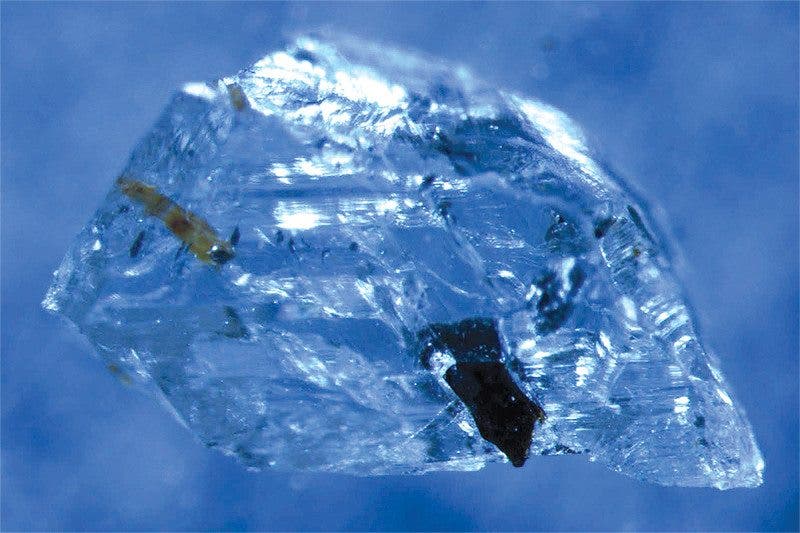Analysis of a mineral inclusion in a 90-million-years-old diamond revealed that the Earth’s mantle might hide a lot more water than we believed, buried as deep as 1,000 kilometers below the surface.

Water one-third of the way to the Earth’s core – it’s a revolutionary idea. But it’s one that a diamond, spewed out by a volcano near the São Luíz river in Juina, Brazil, some 90 million years ago, seems to point at. The discovery came from analysis of a sealed inclusion, an imperfection in the stone, which contains minerals trapped by the forming diamond.
Through infrared microscopy, scientists analyzing the material found it included hydroxyl ions in its chemical make-up, a compound usually formed from water molecules. And there were a lot of these ions present in the inclusion. But just finding out there was water around where the diamond was one thing – the team also had to determine the depth at which this happened. Once again, they turned their eyes to the inclusion.
They found it was mainly composed of ferropericlase, a mixture of iron and magnesium oxide which can absorb some other metals, such as chromium, aluminum, and titanium, in the extremely hot and pressurized environment of the lower mantle. Jacobsen found that these “extra” metals had separated from the ferropericlase, a phenomena that can only take place in milder conditions as the diamond inches towards the surface. Based on the composition, they estimate the inclusion formed at around 1,000 kilometers deep. The inclusion was sealed in the diamond since the beginning, and for the metals to be present at all, it had to have originated in the lower mantle. That means the water signature can only come from the lower mantle.
“This is the deepest evidence for water recycling on the planet,” he says. “The big take-home message is that the water cycle on Earth is bigger than we ever thought, extending into the deep mantle.”
Water clearly has a role in plate tectonics, and we didn’t know before how deep these effects could reach,” he says. “It has implications for the origin of water on the planet.”
The findings could support the theory that the Earth had always had water, instead of having it shuttled in by comets and other space rocks.
The full story appeared in print, New Scientists issue 3101, under the headline “Oceans of water in deep Earth go 1000 km down.


